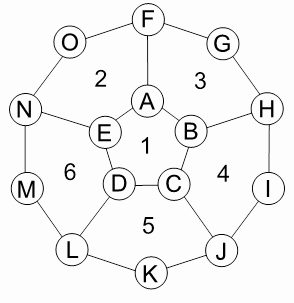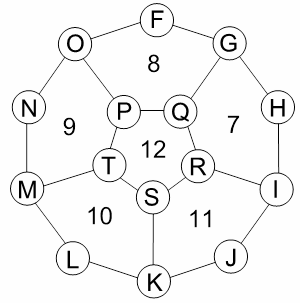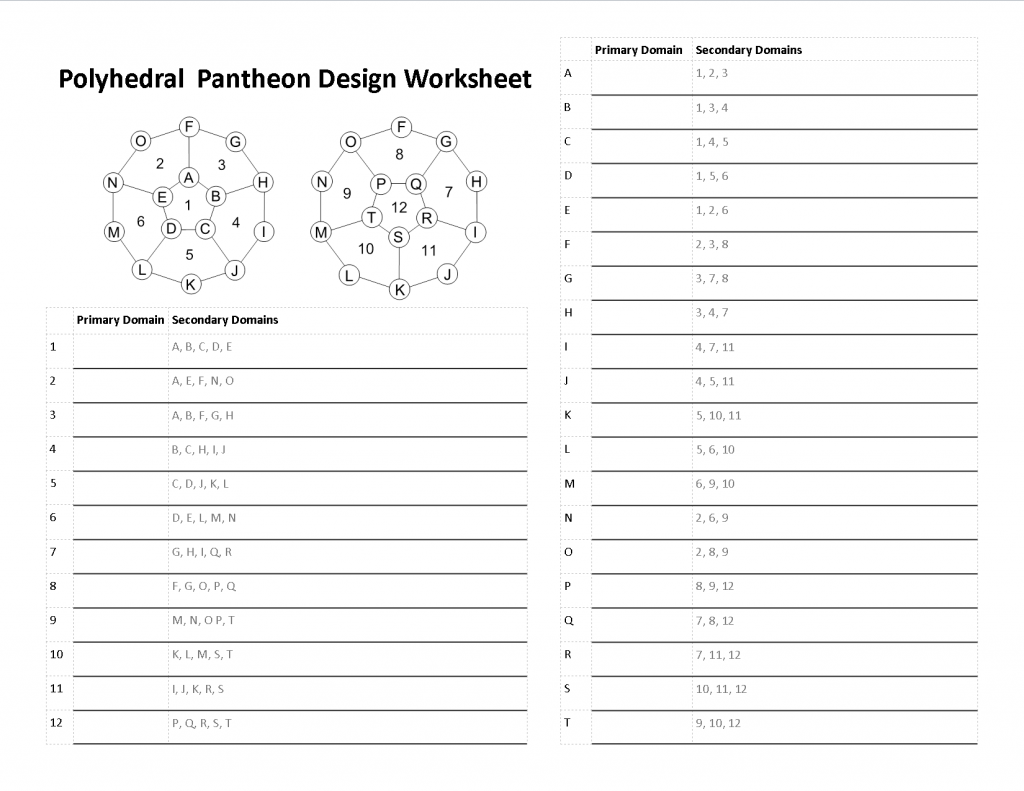A few years ago I wrote an article on Polyhedral Pantheon Design. I decided it was finally time to follow up on that post (especially since it predates this blog — it’s here on its original publication date to another location).
I was recently looking through Pathfinder’s Advanced Player’s Guide and realized that it lends itself remarkably well to polyhedral pantheon design (to be demonstrated in another followup, coming soon).
Polytheism in D&D
Gods in polytheistic systems are generally ascribed portfolios, areas of specific interest to them. In D&D this is modeled in various ways depending on edition.
- Before AD&D 2e this was largely color only, with no mechanical effect (though using certain spells might be counter to the god’s interest and get a cleric in trouble… but as far as I can tell this was little more than a suggested guideline with no concrete rules). In some settings gods might have spells unique to their followers, but usually only a small number.
- In AD&D 2e priests of different gods might have access to different spheres of spells and differing divine powers. Again, settings might have spells unique to their followers.
- In D&D 3.x gods had domains (one spell per spell level, plus domain powers) that clerics could choose two of and add to their spell lists, and gain an extra spell slot of each level to prepare a domain spell in.
- I can’t speak to how they are implemented in D&D 4e.
I’m mostly a 3.x kind of guy, so when it comes to designing pantheons I work with domains.
Real-World Polytheism vs. D&D Polytheism
In real-world polytheistic religions most people rarely follow a single, or any specific, god. Instead, they tend to make offerings and requests to the gods most closely related to what they want to happen (or not happen). For instance, few might follow Poseidon specifically, instead making offerings to him when doing things related to the sea (or earthquakes, or horses, or other things ascribed to Poseidon)… but to Apollo when seeking knowledge or working medicine. Of course, if someone tends to do things relating to the portfolio of a particular god their prayers are likely to go to that god more than others (and there is also concept of cities having patron gods), so I suspect that many people, while they didn’t slight other gods, tended to follow some more closely than others. Overall, however, it is easy to imagine that D&D doesn’t do a good job of modeling real-world polytheism.
While D&D polytheism doesn’t closely match real-world polytheism, is does do a decent job of modeling cults, followers of specific gods. D&D tends to have an ‘adventurer-centric’ view of the world (consider how few spells and magic items are very useful in regular life and totally useless in combat), and working with or against cults is well within adventurer territory. At some point I’d like to see a ‘pantheistic priest’ class, but for now ‘cleric’ does a pretty good job of modeling certain types of cultists. I’ll come back to the cleric class later.
Overview of Polyhedral Pantheon Design
Picture a dodecahedron (d12). It has twelve faces, twenty points, and thirty edges.
Give each face and point a domain (32 total).
Treat each face as a god with six domains (five from the adjacent points shared, each with two other core gods, and one specific to the god). Twelve is a pretty good number of gods for the core of a pantheon. These are the headliners: Zeus, Hades, Poseidon, Apollo, Athena, and so on.
You can also treat each point as a god with four domains (three from the adjacent faces shared, with with four other secondary gods, and one specific to the god). Twenty is a pretty good number of secondary gods. These are the secondary ones most people can remember if they work at it.
You could even treat each edge as a minor god with two domains (the adjacent points). This gets you thirty more if you really need them — and if you need thirty more you could use the adjacent faces.
So: assign domains to edges and points of a d12, build lists of gods from here.
Using this mechanism, I would assign portfolios after the domains.


In the pictures above the numbered polygons are the faces of the dodecahedron (the core gods) and the circled letters are the points (and secondary gods, if you want them).
Random versus Selected
The domain assignments may be done randomly or deliberately. I favor a combination of both, to be honest. Every time I have worked with this I have deliberated chosen some of the domains (the major thematic elements such as alignments or elemental domains) to make sure they work the way I want, then randomly selected the others. From time to time I might overrule a random selection, but I try not to if I can avoid it because I have learned that the ones that don’t make obvious sense are often the ones that are the most interesting later. Knowledge and Magic together, that almost always makes sense… but what if Knowledge isn’t associated with Magic but with Death? Or Destruction? That tells me something interesting about the society this god is a part of.
I might work with faces first, or edges, or mix and match. It all depends on where I’m going with it.
Alignments
When I first considered polyhedral pantheon design, I started with an icosahedron (d20), just as Weis and Hickman did for their Rose of the Prophet trilogy. It turns out that you cannot end up with all nine alignments covered in the core gods if you use an icosahedron. However, I realized that if you put the domains on the faces instead and treated the points as gods (in other words, convert the system to using a dodecahedron instead) you could…. and twelve struck me as a better number of core gods anyway.
In the diagram above, if you want to have all alignments covered you can do it by having the following assignments:
- A: Law
- C: Good
- L: Chaos
- N: Evil
Conversely, if you wanted to have each alignment stand alone (three each of Lawful Neutral, Chaotic Neutral, Neutral Good, and Neutral Evil) you can do it by having the following assignments:
- A: Law
- J: Good
- M: Chaos
- Q: Evil
This has some interesting effects. While each alignment is supported by three gods, the sixteen points that are not yet assigned are shared between gods of different alignments, possibly conflicting (the various neutrals, or neutral with tendencies). The domains on those points are going to be interesting, I think — War might be shared by Law and Good, Law and Evil, or even Law and Chaos (but will still have a tendency to one or the other). In this pantheon there is no ‘True Neutral’ — everyone who doesn’t have a side at least has a preference.
Worksheet
I put together a worksheet that may be helpful.

Closing Comments
Overall this is a pretty straightforward method for the first step in designing a pantheon. It creates a reasonable number of core gods (plus secondary and minor, if you want them) covering a large number of domains. Each domain may be associated with several gods, but if you decide to use only the core or secondary gods you can have domains unique to a god in addition to the shared domains.
The combinations can suggest aspects of the related culture — a culture where War is associated with Chaos, Destruction, and Magic might be rather different from a culture where War is associated with Law, Protection, and Artifice. While working on an example pantheon I found myself picturing how certain gods might be worshiped and when, and even what their temples and formal dress might look like.
Note too that this is a tool only. If it generates a god you can’t make work or don’t want to include, feel free to ignore it. If it sparks ideas and takes you somewhere entirely unrelated to the results of this tool, that’s cool too.
The minor 20 (and again 30) can easily be filled by lesser deities and demigods, and various servant powers. (It occurs to me that not all slots need be filled, either.)
Absolutely. This model builds a pantheon that mathematically might be described as ‘coherent’ — gods with certain traits are likely to be found ‘near’ gods with similar traits. However, it is not required that this be so.
I think it reasonable to have the secondary gods as more or less subsets of the core gods (overlapping to some degree — if three gods have the Death domain, it’s reasonable that the secondary god with the Death domain exhibit some measure of those core gods)
I also think it reasonable that the secondary gods exhibit different traits entirely. While it is likely that the servants of the goddess of magic be somehow related to magic (have that domain, say), it’s also reasonable that there exist servants that don’t exhibit that trait.
It’s kind of funky that way. Generating the core gods and ignoring the secondary and minor gods entirely, populating their place with a hierarchy (or mob) that suits where you want to go with each core god is entirely valid.
As I said in my closing comments, this is a tool to prod creativity and thought. Feel free to use or not use any part of it, it’s all good if you end up with something you like.
Pingback: Polyhedral Pantheons: Pathfinder Edition | Keith Davies — In My Campaign - Keith's thoughts on RPG design and play.
I really like this. I’ve currently building a city where there are lots of faiths, and this is nicely timed.
I’m glad to hear it. Later today there should be an example of it in use.
Pingback: Polyhedral Pantheons: Applied | Keith Davies — In My Campaign - Keith's thoughts on RPG design and play.
Pingback: Polyhedral Pantheon Clerics | Keith Davies — In My Campaign - Keith's thoughts on RPG design and play.
Pingback: Links of the Week: April 16, 2012 | Keith Davies — In My Campaign - Keith's thoughts on RPG design and play.